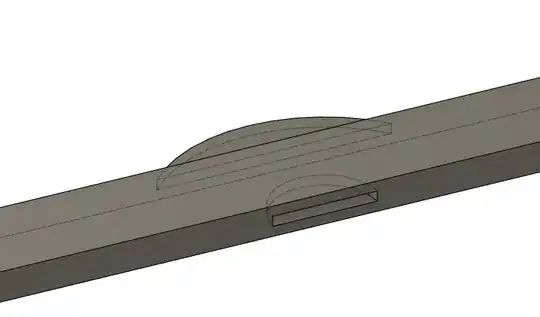We're thinking of buying a PETG-powered printer. When researching printers available on the market, there are machines with a 100 microns. I was wondering if there are machines with a 50 microns or close to 50 micros? Otherwise, why not?
-
3I do not understand what you mean by "50 resolutions". Do you perhaps mean a resolution/layer height of 50 *microns*? If so, you might find [this question](https://3dprinting.stackexchange.com/questions/10349/do-3d-printers-really-reach-50-micron-0-05-mm-accuracy) on the meaning (or lack thereof) of this "resolution" figure interesting. It is usually not a good metric to judge (FDM) printers by. – Tom van der Zanden Apr 23 '21 at 11:46
-
4Your edit has still not made this an understandable question. It now says "50 microns" but it doesn't say 50 microns of what. Layer height? Resolution (in X, Y, or Z)? Repeatability (in X, Y, or Z)? Tolerance of the final part? – Tom van der Zanden Apr 23 '21 at 12:18
-
PETG is a *material* for *FDM* type machines, not a power source. 0.05 mm is 50 µm aka 50 Micorn. – Trish Apr 23 '21 at 13:16
-
The Monoprice Maker 10 Mini claims to do this, but the devil is in the details. For example, you may need a special nozzle. https://www.monoprice.com/product?p_id=34438 – Joel Coehoorn Apr 23 '21 at 18:19
-
@JoelCoehoorn a special nozzle and super slow settings and a perfect machine - which means it's anything but a production machine. – Trish Apr 23 '21 at 18:39
2 Answers
I assume you mean a resolution of 50 microns (0.05 mm step size) Most FDM printers can produce something useful upto 100 microns. If you want to print with more precision, try resin printers. The reason for this is that an FDM printer uses an extruder with a specific nozzle diameter (typically around 0.4mm and minimum around 0.25 mm). plastic has too much viscosity to fit through a smaller diameter nozzle easy.
-
2I don't think the question refers to printers with a *step size* of 0.1/0.05 mm. Most 3D printers have a step size that is far smaller than 0.1 mm. Most printers have about ~100 steps per mm in the X and Y axes (so 0.01 mm per step). – Tom van der Zanden Apr 23 '21 at 12:23
-
@TomvanderZanden but the best achieveable resoution is about 0.5 Nozzles area horizontally and 1 layer vertically. – Trish Apr 23 '21 at 13:17
-
@Trish Where does "0.5 Nozzles area" come from? You have to be careful what you mean by "resolution". The nozzle size limits the smallest things you can print but you can still position the nozzle more accurately, e.g., you can print both a 20.0 mm and 20.1 mm cube with a 0.4 mm nozzle and you would be able to differentiate between both prints. – Tom van der Zanden Apr 23 '21 at 13:31
-
@TomvanderZanden true, what I meant is "smallest achieveable depression in a surface that can be reproduced under perfect movement" - the other way round (extrusion) is in the 1-nozzle area. I elaborated on that in my answer – Trish Apr 23 '21 at 13:34
-
It's difficult to have a fast enough flow rate to prevent jamming with a 0.2 mm nozzle and 1.75 mm PETG filament. This would be more practical with a smaller diameter filament. – Perry Webb Apr 23 '21 at 14:32
PETG is a material type that is only available for Fused Deposition Modeling (FDM) type printers. Those are limited in their achievable resolution by their nozzle size:
- the Smallest depression in a surface that is printable is about half a line width in XY and 1 layer height in Z.
- the smallest bulge from a flat surface that can reliably be produced by FDM is in the area of one line width in XY and 1 layer height in Z.
- The minimum thickness of an item to be printable is one line width.
- The maximum layer height in Z is 3/4 of the nozzle width.
- Optimal line width is 1.1 Nozzle diameters.
- That all is the theoretical limit, as machine movements and such push this minimum up by a factor of at least 1.5 and more likely 2-3, depending on how much your machine is tuned.
The smallest available nozzles that doesn't require specialty extruders are 0.2 mm. That means the absolute minimum detail that could in theory be reproduced on a surface of enough thickness is a 0.1 mm depression using a design similar to this picture:
As a result: NO FDM with PETG is not a solution to your requirements, you want reliable 0.05 mm resolution in XYZ, which is the area of Resin printers, especially DLP and SLA, but also Stratasys PolyJet can achieve this at the moment.
Estimating from your other questions (like this), I still suggest looking at a resin-based system that has materials that are certified for medical use!
- 20,169
- 10
- 43
- 92
